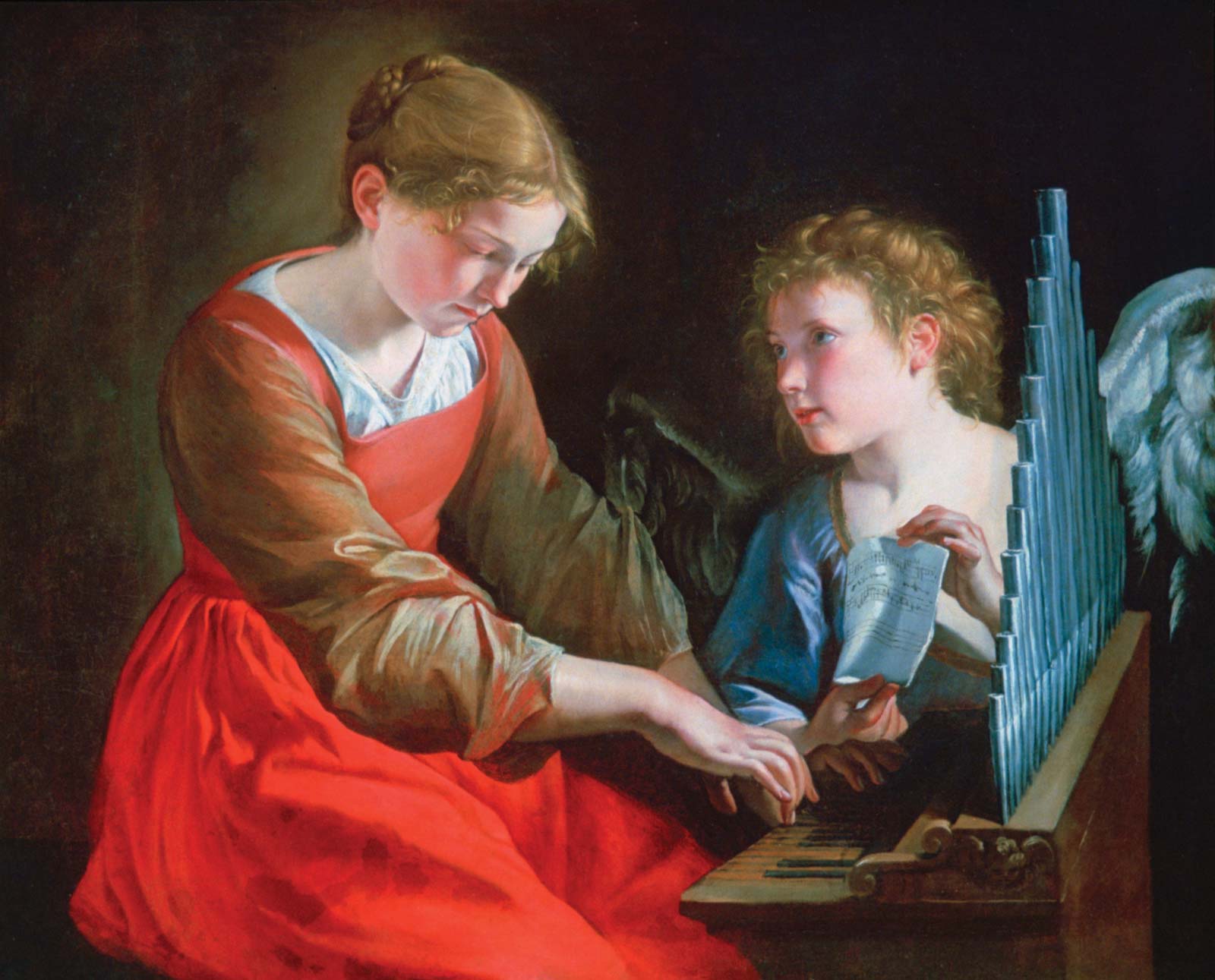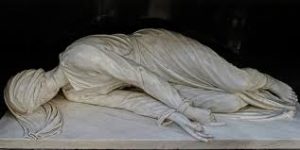
St. Cecilia was a renowned virgin martyr of the early Church. The time she lived is not precisely known, but she most likely lived during the 200s AD. According to the story that was handed down from antiquity, Cecilia was born in Rome to a Catholic family, and her father was a member of the Roman Senate. Her parents arranged a marriage for her which she did not want. Her husband was to be Valerian, a young man from another prominent Roman family, who were not Christians. Cecilia had resolved to remain a virgin for Christ. She preceded the days before her wedding with fasting and prayer, and entrusted to God her wish to remain a virgin.
PENITENTIAL WEDDING
During the wedding ceremony, she wore a hair shirt under her beautiful dress. The wearing of a hair shirt was done for many centuries as a form of hidden penance and to avoid temptations of the flesh. This practice has ancient origins dating back to the penitential “sackcloth and ashes” recorded in the Old Testament and also the fact that St. John the Baptist, a preeminent penitent, wore a garment of camel’s hair.

At the conclusion of the wedding festivities, Cecilia informed her husband that her body was being carefully guarded by an angel and that he must not violate her. After Valerian visited with the bishop, he consented to be baptized, and the couple vowed to remain virgins. An angel visited the couple and crowned them both with flowers. The couple was visited by Valerian’s brother Tiburtius, and he too consented to become Christian. The brothers became devoted to works of charity, and gave away much of their wealth to help the poor. While burying the remains of some martyred Christians, they were discovered and arrested. After refusing to sacrifice to the pagan gods, Valerian and Tiburtius were sentenced to be beheaded. The appointed executioner, Maximus, was so won over by their testimony as to profess the Christian Faith and join them in martyrdom.
COURAGEOUS MARTYRDOM
It was Cecilia who buried the three men together in one tomb, thus placing herself in grave danger of arrest. Sensing that her end was near, she made arrangements for her beautiful home to be converted to a place for covert Masses to be held. She was indeed arrested, and had a lively debate with the prefect who was to carry out her trial. When he was unable to force her to renounce her faith, he sentenced her to be suffocated. When that was unsuccessful, a soldier was ordered to behead her. He did not, however, complete his task, leaving her alive, but with a deadly gash. She lived for three days before she bled to death. She was buried by the same bishop who baptized her husband, and her body was placed in the Catacomb of Callistus, a network of underground tombs on Rome’s Appian Way.
The veneration of St. Cecilia has been a part of the Church for many centuries. Her name is mentioned in the ancient Eucharistic prayer, the Roman Canon, formerly used at every Roman Catholic Mass, or what we would now refer to as Eucharistic Prayer 1. There is, however, doubt about the details of her legendary story. It is true that Valerian, Tibertius and Maximus were martyred in the mid-third century and buried in the catacombs, because their location was indicated on an ancient map for pilgrims. It is also known that Cecilia did in fact exist and was a virgin martyr. Several differing sources attempting to date her life come to conclusions varying from the second to the fourth century, so we will probably never know for sure, until and unless we meet her in Heaven. Her remains were found in the area of the catacombs adjacent to the crypts of several second and third century popes.

VENERATED FOR CENTURIES
Cecilia’s feast day of November 22 was being celebrated in a fourth century church which was dedicated to her patronage in the fifth century, and which may very well be built on the location of her family home. Pope Pascal I, in the ninth century, sought to return her remains to this church. Her body was located, still dressed in bloody garments, and was returned along with the remains of Valerian, Tibertius, and Maximus to St. Cecilia Church. The four were buried under the high altar in a special chapel and remain there to the present. When Cecilia’s tomb was opened in 1599, her body was found to be incorrupt and lying in the same position as when she died.

The artist Stefano Maderno was commissioned to capture her image in a sculpture. His marble masterpiece inside St. Cecilia Church portrays her just as he saw her, bearing the lethal gash on her neck and using her fingers to indicate one God in three Persons. St. Cecilia is especially beloved as the patroness of musicians. One legend is that she sang hymns while she lay dying. Another is that while the musical merriment of her wedding was going on, she was singing silently to God in her heart to honor her virginal wish.
